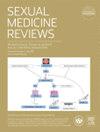Efficacy of collagenase Clostridium histolyticum combination therapies for Peyronie's disease: a systematic review and meta-analysis.
IF 3.6
2区 医学
Q1 UROLOGY & NEPHROLOGY
引用次数: 0
Abstract
INTRODUCTION Peyronie's disease (PD) is a common penile disorder characterized by the formation of fibrous noncompliant hard nodules in the tunica albuginea of the penis. Collagenase Clostridium histolyticum (CCH) is an injectable drug that treats PD by enzymatically degrading plaque interstitial collagen. CCH has been used in patients with varying curvature, as well as in the acute and stable phases of the disease, through a variety of treatment regimens and combinations. We carried out a systematic review and meta-analysis to assess the efficacy of CCH combination therapies for PD. METHODS We selected 4 observational comparative studies and 3 randomized controlled trials including 532 participants from the PubMed, Embase, and Cochrane databases (until December 2023) to evaluate the efficacy of CCH combination therapies for PD. The primary outcome was clinical efficacy as evaluated by improvement in penile curvature and penile length, as well as by scores on the Peyronie's Disease Questionnaire (PDQ) for symptom bother, penile pain, and psychological symptoms. Continuous data were represented by mean difference (MD) and 95% CI. All data were analyzed by Review Manager version 5.3. RESULTS For penile length (MD, 0.81 cm; 95% CI, 0.17-1.45; P = .01), PDQ symptom bother (MD, -1.02; 95% CI, -1.83 to -0.21; P = .01), and PDQ penile pain (MD, -0.93; 95% CI, -1.50 to -0.36; P = .001), CCH combination therapy showed significantly greater improvements vs CCH monotherapy. However, in the other indicators, penile curvature and PDQ psychological symptoms, there was no significant difference between the therapies. CONCLUSION This meta-analysis supports that CCH combination therapies can partially increase penile length and ameliorate symptom bother and penile pain to some extent. However, CCH combination therapies still need to be evaluated through more high-quality research.胶原酶溶组织梭菌联合疗法治疗佩罗尼氏病的疗效:系统综述和荟萃分析。
简介 佩罗尼氏病(PD)是一种常见的阴茎疾病,其特征是在阴茎白膜上形成纤维状不顺从的硬结。胶原酶组织溶解梭菌(CCH)是一种可注射的药物,通过酶解斑块间的胶原蛋白来治疗阴茎硬结症。CCH 已通过各种治疗方案和组合用于不同弯曲度的患者以及疾病的急性期和稳定期。我们从 PubMed、Embase 和 Cochrane 数据库(截至 2023 年 12 月)中选择了 4 项观察性比较研究和 3 项随机对照试验,包括 532 名参与者,对 CCH 联合疗法治疗帕金森病的疗效进行了系统回顾和荟萃分析。主要结果是临床疗效,评价指标包括阴茎弯曲度和阴茎长度的改善,以及佩罗尼氏病问卷(PDQ)中症状困扰、阴茎疼痛和心理症状的评分。连续数据以平均差(MD)和 95% CI 表示。结果对于阴茎长度(MD,0.81厘米;95% CI,0.17-1.45;P = .01)、PDQ症状困扰(MD,-1.02;95% CI,-1.83至-0.21;P = .01)和PDQ阴茎疼痛(MD,-0.93;95% CI,-1.50至-0.36;P = .001),CCH联合疗法与CCH单一疗法相比有明显改善。结论这项荟萃分析支持CCH联合疗法可以部分增加阴茎长度,并在一定程度上改善症状困扰和阴茎疼痛。然而,CCH 联合疗法仍需通过更多高质量的研究进行评估。
本文章由计算机程序翻译,如有差异,请以英文原文为准。
求助全文
约1分钟内获得全文
求助全文

 求助内容:
求助内容: 应助结果提醒方式:
应助结果提醒方式:


